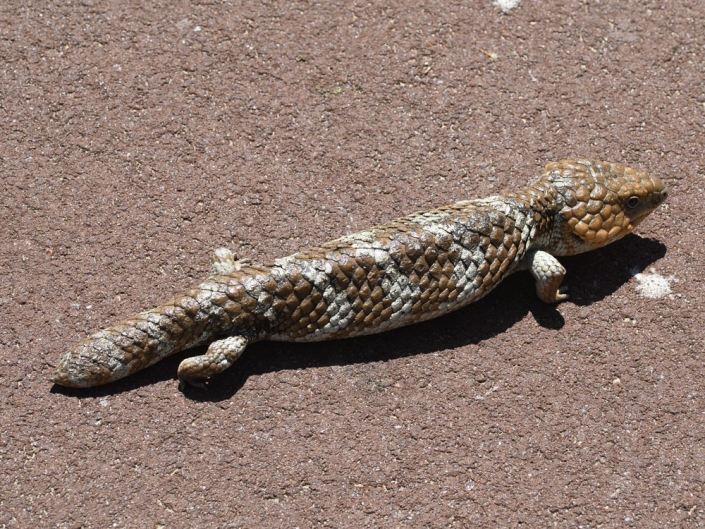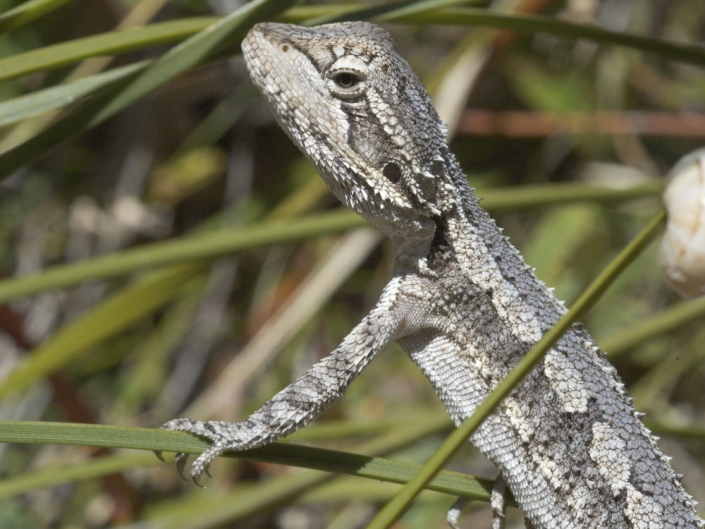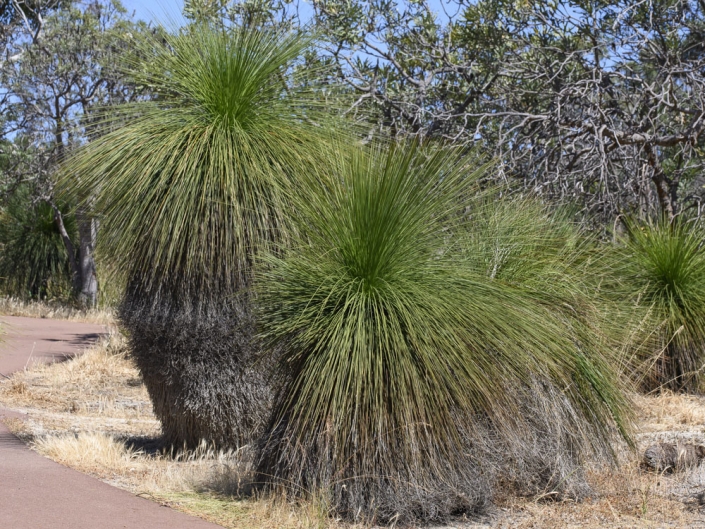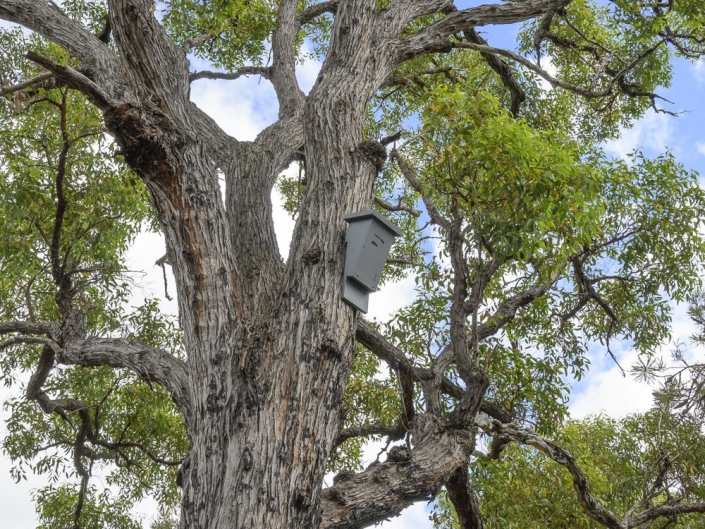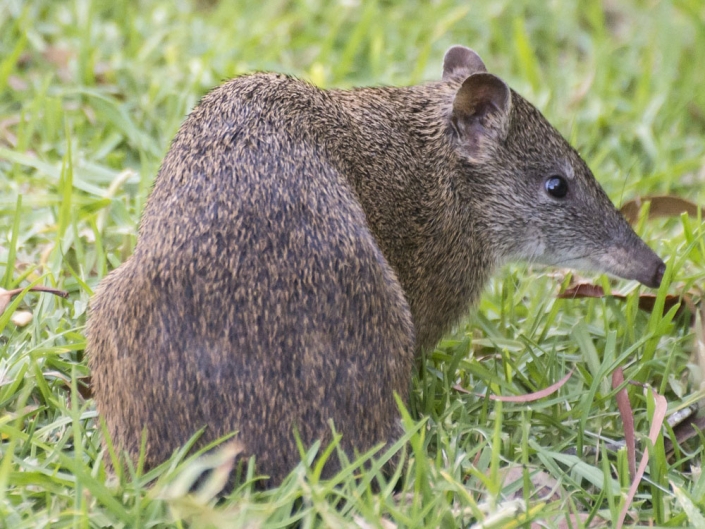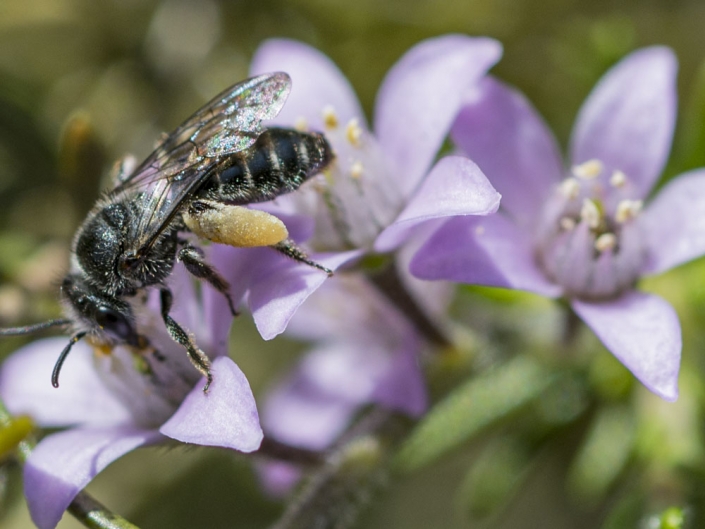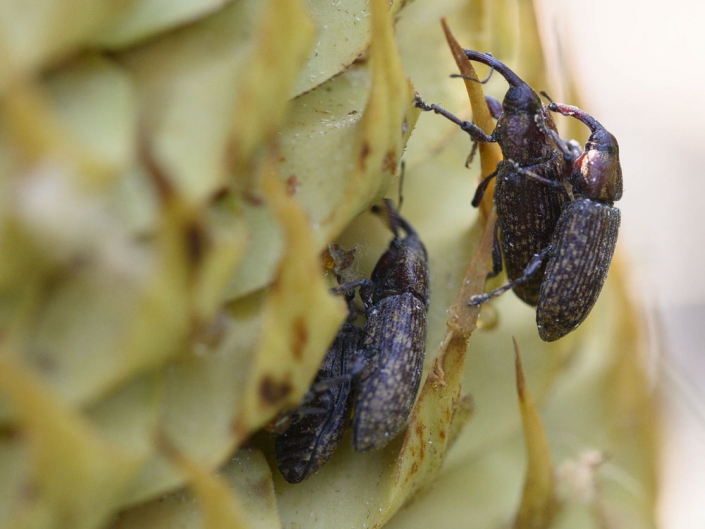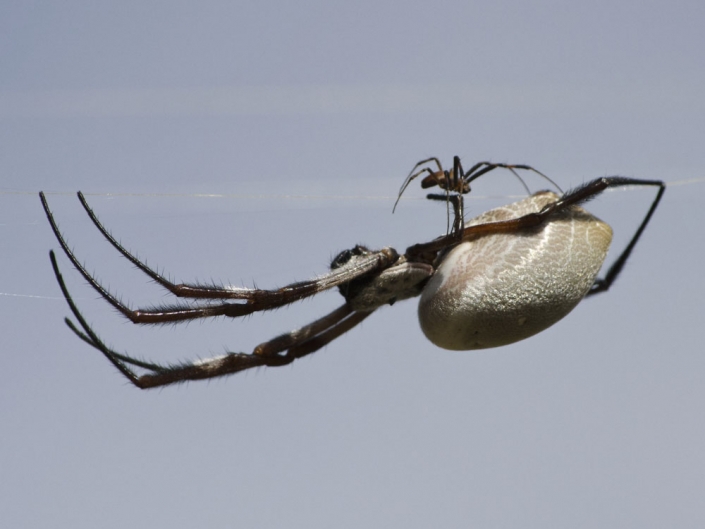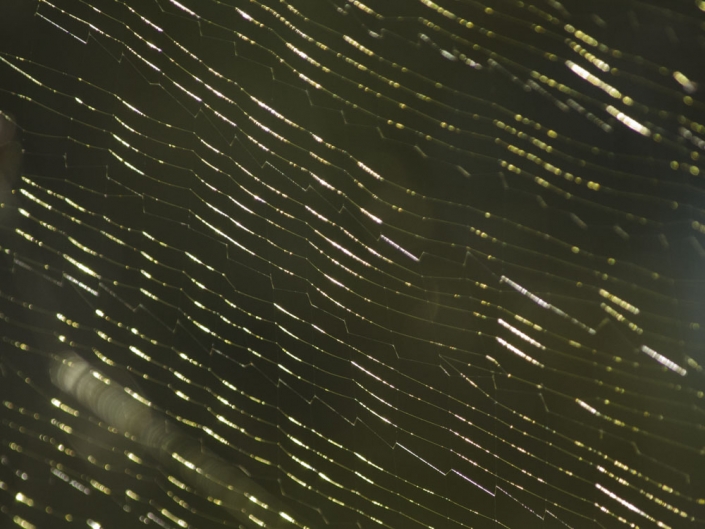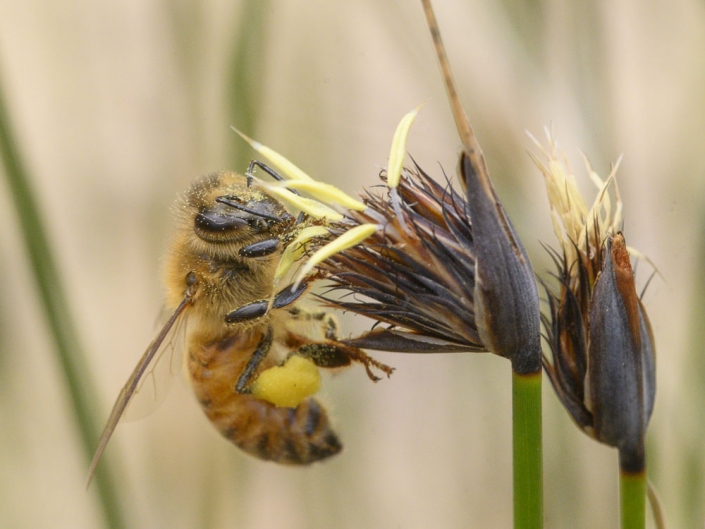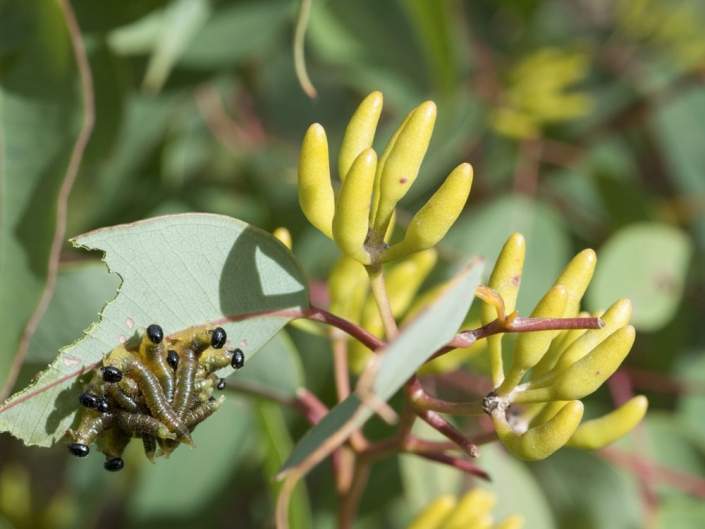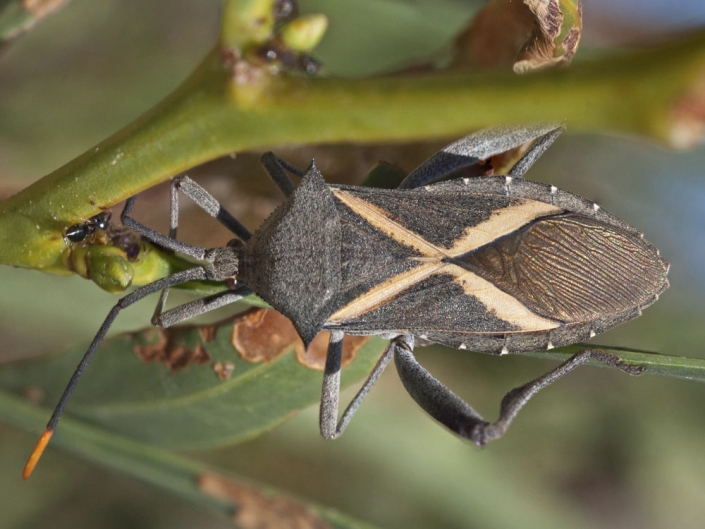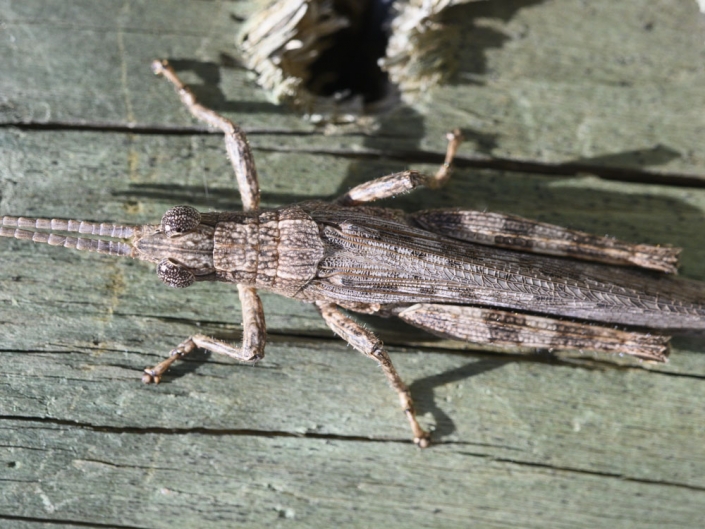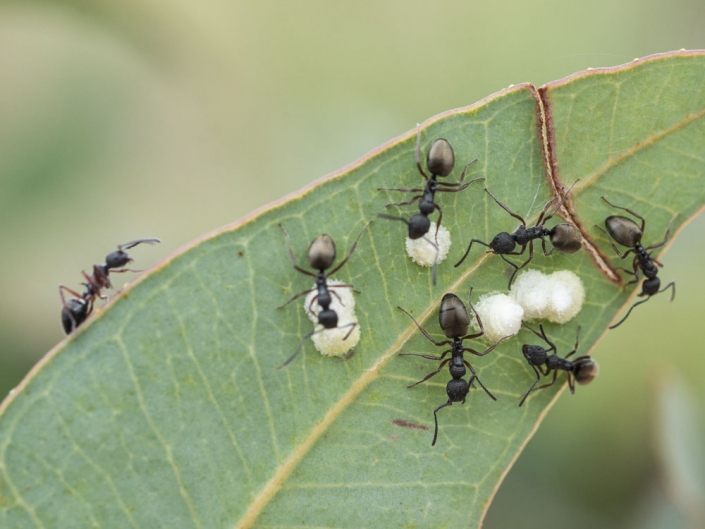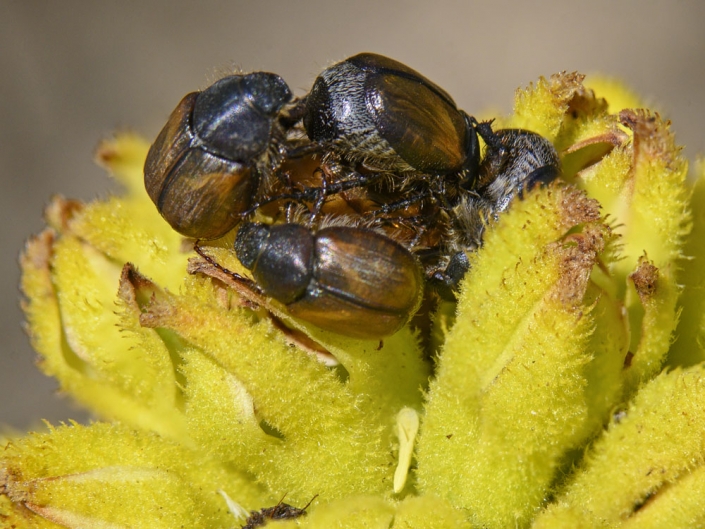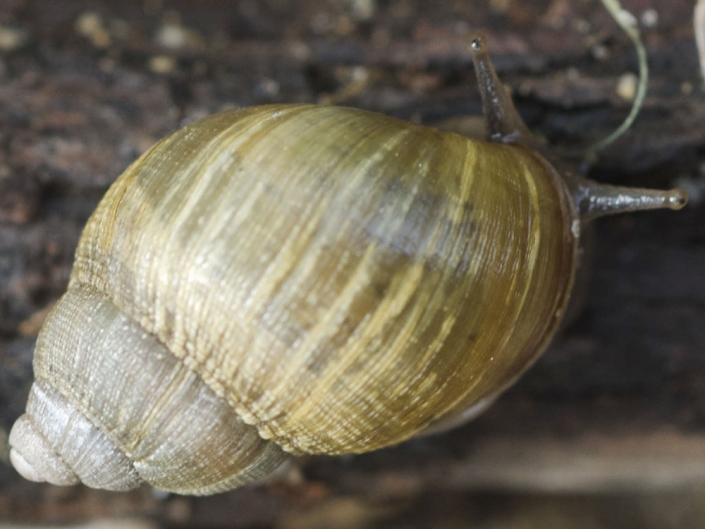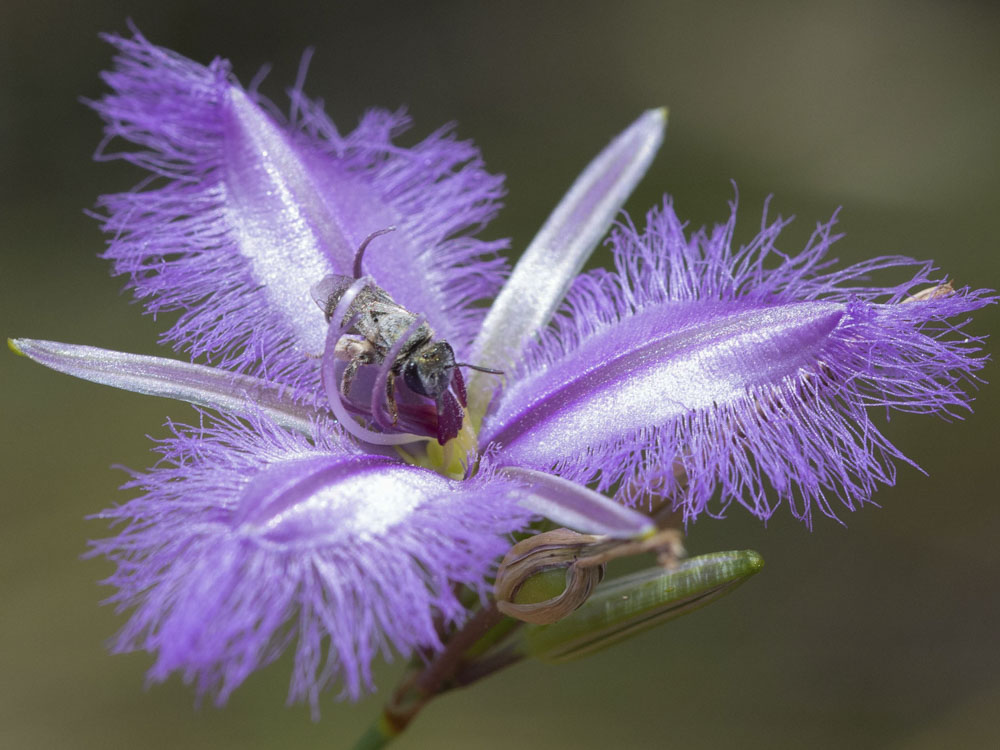Point of Interest 19: Web of Life Sign
This area is about 25 m West of the southern Lloyd Drive gate. It is also near the web of life interpretive sign which explains some of the complex interactions between living things which occur here. This area has a relatively dense tree cover and similar wildflowers to nearby stops. Freesias are a problem in this area.
Common Wildflowers
Winter – Greenhoods (Pterostylis orbicularis), Native Wisteria, Swan River Myrtle
Spring – Pansy Orchids, Cottonheads, Swan River Myrtle, Native Wisteria, Blue Sun Orchids
Late Spring – Blue Devils (Eryngium pinnatifidum)
Summer – Elegant Pronaya (Billardiera fraseri)
Focus Topic 39: Larger Animals in Warwick Bushland
This area is rarely visited by kangaroos or other large native animals but harbours a wide diversity of smaller animals such as lizards, birds and bats. Native mammals resident in the area include bats and Quendas (Southern Brown Bandicoots). The commonest reptiles are bobtails, Fence Skinks and Western Bearded Dragons. These animals often rely on grass tree skirts for shelter so may be less common due to frequent fires. A full list of animals reported to occur here is provided online. Snakes have been seen nearby, so it is important for dogs and people to stay on paths.
Reptiles of Warwick Bushland
Focus Topic 40. Mini-beasts and their Ecology
Warwick Bushland is a thriving natural ecosystem that is sustained by many complex interactions between living organisms. This area supports a high diversity of small arthropods such as snails, millipedes, etc. Common insects include the native bees, flies, beetles, bees and wasps that pollinate our wildflowers (see Banksia Woodland Pollination site). Insects also recycle waste, disperse seeds and provide a source of food for animals, especially birds.
The most beautiful insects include butterflies and moths and dragonflies that are seen most often in warm weather. Warwick Bushland is an important refuge for the Graceful Sun-moth, an uncommon species that flies in late summer. There are also many spiders, including the very large Golden Orb Weaver with massive golden webs that are best seen in summer.
However, not all insects are good for natural bushland. The European Honeybee (Apis mellifera) is an exotic species introduced to Australia over 190 years ago by the early settlers. Feral European Honeybees impact upon native flora and fauna through competing with native bees for floral resources and steal pollen from species they do not pollinate, especially male flowers of sedges. They also displace birds from tree hollows.









